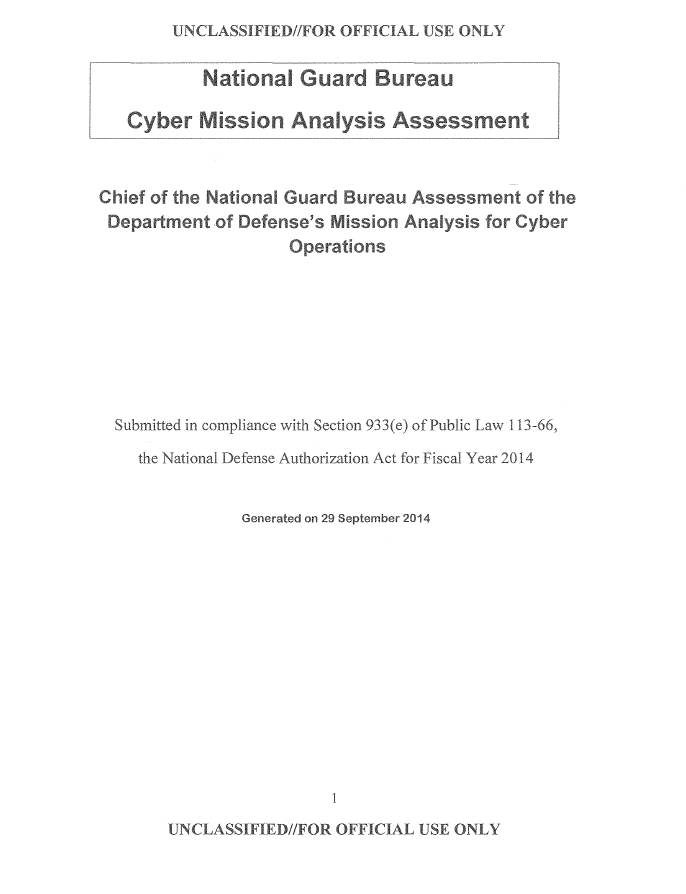This report fulfills the requirement contained in the National Defense Authorization Act (NDAA) for Fiscal Year (FY) 2014, Section 933(e) “National Guard Assessment.” The results of the National Guard’s assessment reflect the Chief of the National Guard Bureau’s (CNGB) view for successfully integrating the National Guard into the Department of Defense’s (DoD) Cyber Mission Force (CMF) and across all Cyber missions to create a Whole of Government and Whole of Nation approach to securing U.S. cyberspace.
The CNGB appreciates the opportunity to provide the “National Guard Assessment” required by Section 933(e) of the NDAA. The CNGB commends the Office of the Deputy Assistant Secretary of Defense for Cyber Policy for its openness, transparency, and inclusiveness in developing the report. Its collaborative approach resulted in the most comprehensive study to date of Reserve Component integration into the Cyber mission. To complete this independent assessment of the Secretary of Defense’s Mission Analysis for Cyber Operations of the Department of Defense report, the National Guard Bureau (NGB) consulted with key stakeholders to ensure an equally transparent review. The NGB solicited input from the Director of the Army National Guard (DARNG), Army Cyber Command (ARCYBER), the Director of the Air National Guard (DANG), Air Force Cyber Command (AFCYBER), United States Cyber Command (USCYBERCOM), the National Guard Cyber General Officer Advisory Council, The Adjutants General (TAG) of the States and Territories, the Council of Governors, and the Office of the Secretary of Defense. The input received in these engagements is reflected throughout this report.
…
DOD Finding: Training and equipping the cyberspace Total Force may require additional capability.
National Guard Assessment: The CNGB concurs with the Department’s finding that training and equipping the cyberspace Total Force likely will require additional capabilities. As discussed in the DoD’s report, USCYBERCOM has heavily relied upon Intelligence Community (IC) training and platforms to conduct operations. The DOD made a number of strategic decisions to invest in training and infrastructure to support the CMF.
For example, the USCYBERCOM CMF training requirements, training slots, and support infrastructurc discussed earlier were envisioned to support approximately 6,200 cyberspace personnel. However, USCYBERCOM’s CMF initial plan did not account for training approximately 2,000 Reserve Component personnel now included in the Services’ proposed Reserve Component integration plan. Therefore, the CNGB asserts that Reserve Component forces should receive a concurrent and propoflional allocation of training dollars and student slots to integrate these personnel into the DoD’s mission-appropriate, cyberspace-related training programs.
The CNGB affirms training received from other sources, such as the ARNG Professional Education Center (PEC) and the ANG Regional Training Institute, must be considered when building the appropriate equivalency training packages to conform to the DOD joint training standard.

